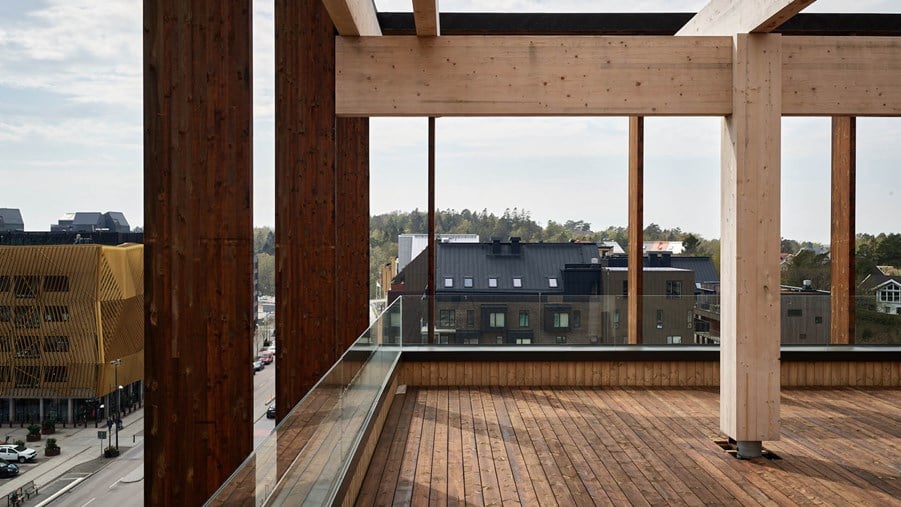
Wood construction is an important solution for the public construction sector to reduce its climate impact. Wood as a material enables not only flexible building systems but also circularity.
The Swedish wood industry is technologically advanced compared to its international competitors and opportunities for exporting wood products and knowledge are considerable.
The public construction sector accounts for approximately 40 per cent of global greenhouse gas emissions. An effective way to reduce emissions is to replace finite and fossil-based building materials and construction systems with circular and flexible methods using renewable materials.
The entire supply chain – from the selection of raw materials to production and transport to finished buildings, use, final stage and recycling – affects emissions and the sustainability profile of buildings. The wood construction sector needs to continue developing construction systems that enable construction with a lower climate footprint. This entails increased modularisation, new types of collaborative construction, more efficient joining technologies and optimising regarding moisture, fire, sound and strength characteristics.
Industrialised wood construction
Industrialised wood construction is a primary driver in the construction sector’s transition to more sustainable construction methods. Suppliers of wood-based building systems for the construction of larger structures and apartment buildings already exist today. This trend has been made possible by industrial wood house builders that construct apartment buildings with a highly industrialised manufacturing processes in factories. This type of construction process is currently under rapid development with automation of information management and production processes. Further research and standardisation will support this trend.
Customised wood-based and resource-efficient processes
The construction and housing sector accounts for the largest proportion of wood product use in Sweden. The extent to which wood is refined may differ considerably between different segments and applications. In the furniture and carpentry industry, products have approximately 20 times the added value of wood products for the construction industry. Overall, added value and volumes can be increased significantly. Research plays an important role in this respect.
Greater knowledge about resource-efficient processes for splitting logs as well as drying and sorting sawn timber are crucial to enable adaptation to specific customer requirements. This, in turn, is necessary for sustainable industrial processes.
There is an urgent need to use a greater share of Swedish forest raw material in long-lasting bio-based products is an effective way to contribute to Sweden’s goal of fossil-freedom. A key aspect of these efforts is to develop more resource-efficient processes for a higher degree of customer order-driven production. For sawmills, this may also entail adapting to a changed raw material base.
Wood-based products in circular systems
Sustainable development requires wood-based materials and products to be repaired, upgraded and ultimately recycled to a greater extent. There is considerable potential in wood and wood construction for increased circularity. It is important to facilitate the reuse and recycling of components in products and buildings already in the design stage. Densification and extended lifespan of our existing buildings with the help of reconstruction as well as additions and extensions are other important development tracks. Research will provide increased knowledge and opportunities in this respect.
Do you want to know more about urgent research in wood and wood construction? Read more in the Swedish Forest-based Sector Research Agenda here.


